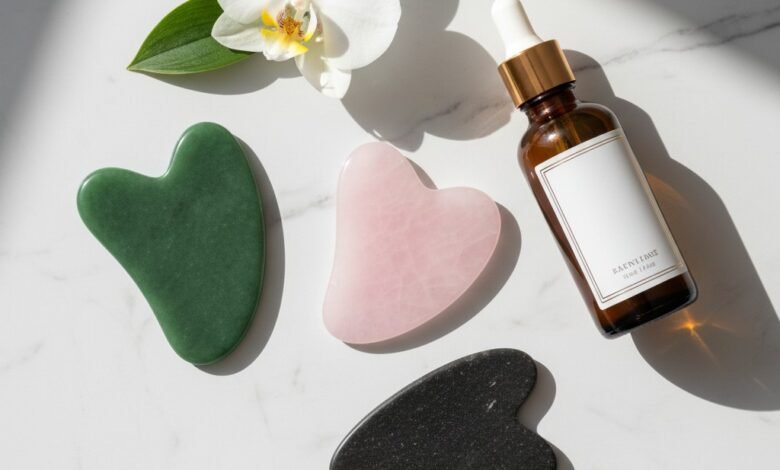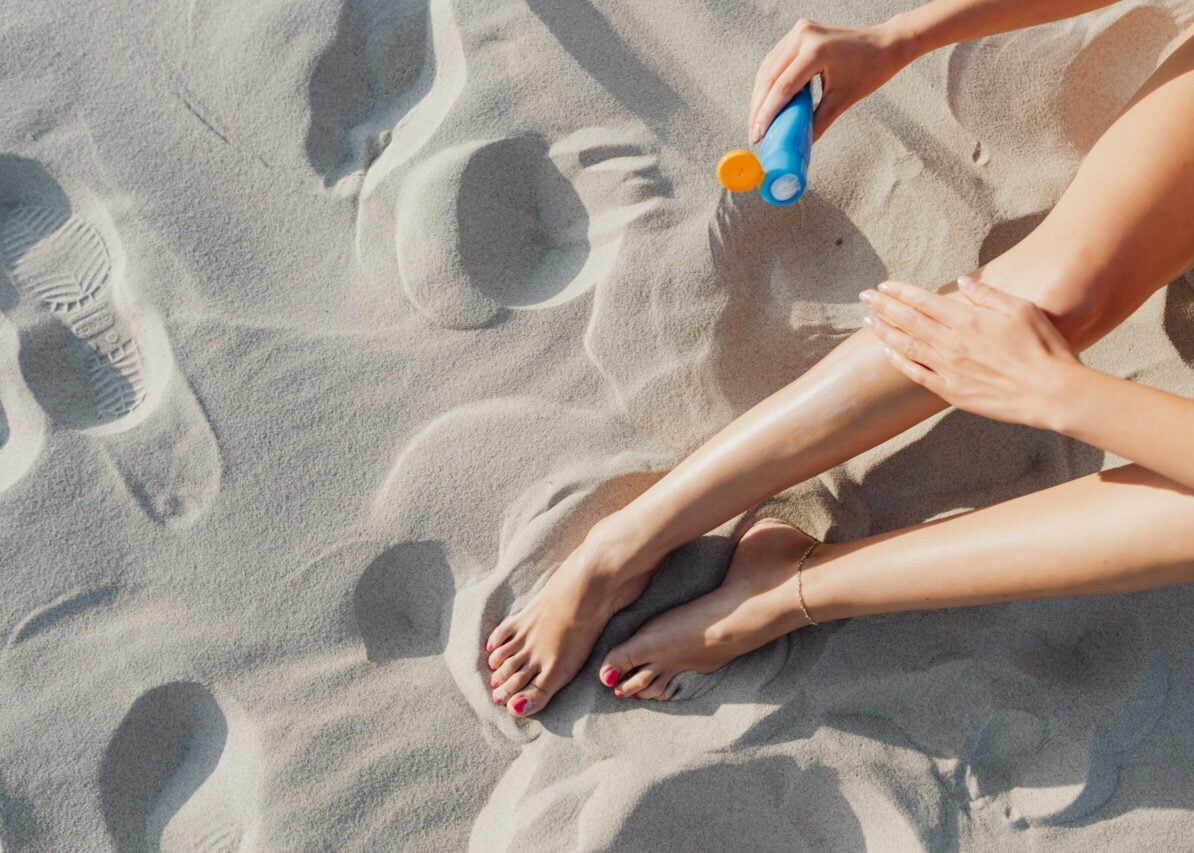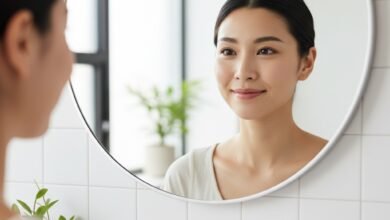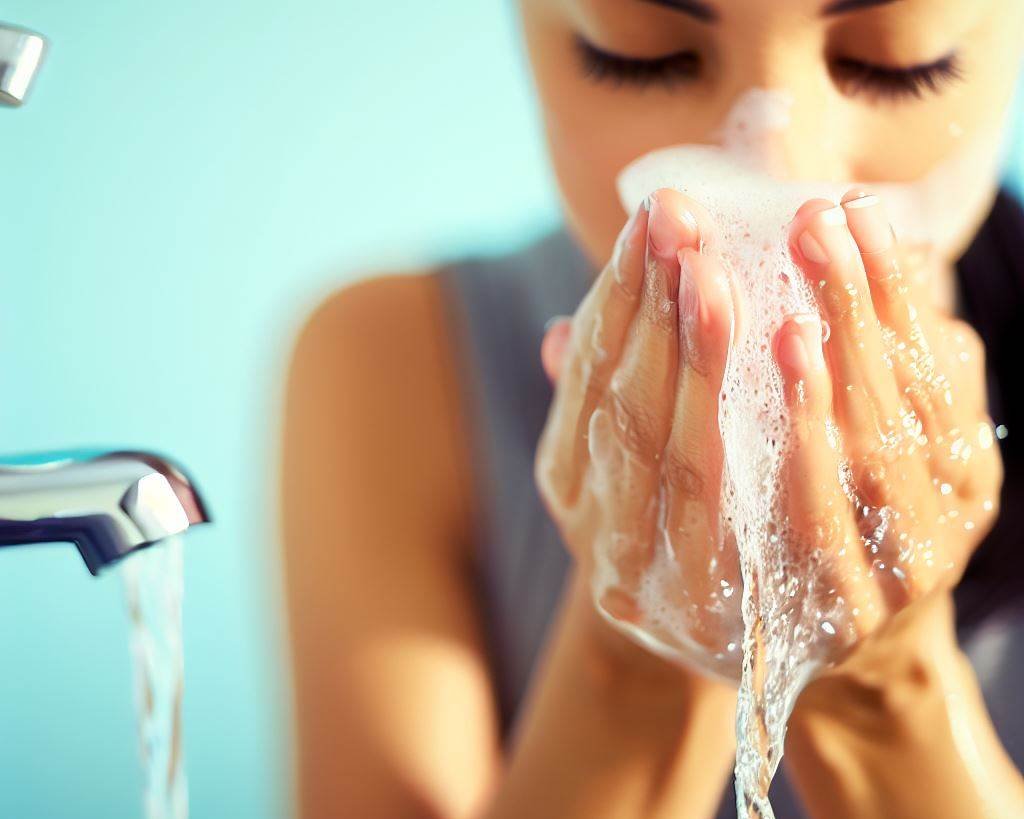Facial Gua Sha: A Complete Guide to Techniques, Scientific Benefits & How to Choose a Stone

Amidst the burgeoning beauty trends, Gua Sha has transformed from an ancient ritual into one of the most sought-after facial care tools. However, to truly understand its power, we must view it as more than just a ‘jade stone’ or a facial ‘scraping tool’. At Salwa Salon, we regard Gua Sha as a precision technique that combines ancient wisdom with modern understanding of skin physiology.
This article will deeply dissect what Gua Sha is, how it scientifically works, its differences from other tools like Jade Rollers, and how you can integrate it into your routine for transformative results. Let’s begin.
Dissecting the Essence of Gua Sha: More Than Just a Massage Stone
Gua Sha (刮痧) literally means “to scrape redness” in Mandarin. This practice is deeply rooted in Traditional Chinese Medicine (TCM), where its purpose is to facilitate the flow of Qi (vital energy) and improve stagnant or blocked blood circulation. In the context of traditional medicine, this technique is used throughout the body to address various complaints, from muscle pain to fever.
When applied for facial aesthetics, the principle remains the same but with a much gentler approach. The controlled ‘scraping’ motion with a Gua Sha tool on oiled skin (face oil) creates gentle friction. This friction aims to:
- Stimulate Microcirculation: Increases blood flow to the skin’s surface, bringing more oxygen and nutrients.
- Promote Lymphatic Drainage: Helps move stagnant lymph fluid, a primary cause of puffiness and toxin buildup.
- Release Fascial Tension: Relaxes the connective tissues (fascia) and small facial muscles that often tense up due to stress or repetitive expressions.
Thus, facial Gua Sha is not merely a massage, but a ritual to revitalize the circulatory and lymphatic systems and restructure muscle tension beneath the skin’s surface.
Fundamental Differences: Gua Sha vs. Jade Roller
Many consider Gua Sha and Jade Rollers to be the same tools with similar functions. However, from an expert’s perspective, both have very different purposes and mechanisms of action. Understanding these differences is crucial for choosing the right tool for your needs.
Gua Sha
The primary focus of Gua Sha is on sculpting and drainage. Its flat shape with various curves is designed to ‘hug’ facial contours like the jawline, cheekbones, and brow area. The pressure applied tends to be deeper and more directed, targeting muscle and fascial layers. This makes it a superior tool for significantly reducing swelling, defining facial contours, and releasing jaw tension (TMJ).
Jade Roller
On the other hand, a Jade Roller focuses more on cooling and superficial relaxation. Its rolling motion provides a gentler, more superficial massage. Its main benefits are reducing redness, soothing the skin, and providing a refreshing, light massage sensation. It is excellent for reducing morning eye puffiness but less effective for deep sculpting compared to Gua Sha.
Simply put: Use a Jade Roller for quick soothing and light puffiness reduction. Use Gua Sha for a deeper treatment session to sculpt contours, promote lymphatic drainage, and relax muscles.
Benefits of Facial Gua Sha Based on Physiological Principles
Here are the main benefits of Gua Sha that we have observed and are supported by an understanding of how the body works.
- Lymphatic Drainage Stimulation to Reduce Swelling
The lymphatic system is the body’s ‘waste disposal system,’ but unlike the circulatory system, it lacks its own pump (like the heart). Its movement relies on muscle contractions and manual motion. Facial puffiness upon waking is often caused by stagnant lymph fluid. Gua Sha’s sweeping movements, directed towards lymph nodes (such as near the ears and neck), effectively push this fluid, resulting in a more sculpted and less puffy face. - Enhanced Microcirculation for Radiant Skin (Glow)
Gua Sha movements cause a temporary increase in blood circulation in the treated area. This increased blood flow brings vital oxygen and nutrients to skin cells. In the long term, this helps repair cells, improve overall skin health, and provide a natural, healthy glow from within, often referred to as ‘the glow’. - Releasing Facial Muscle Tension & Sculpting Contours
Unbeknownst to us, we store a lot of tension in our facial muscles, especially in the jaw, forehead, and between the eyebrows. This chronic tension can lead to fine lines and make the face appear tired. Gua Sha acts like a deep tissue massage for the face, helping to unravel ‘knots’ in the muscles and fascia. As a result, the jawline appears firmer, cheekbones are more defined, and facial expressions look more relaxed. - Optimization of Skincare Product Absorption
Using Gua Sha over a serum or face oil doesn’t just act as a lubricant. Its massaging motion helps products absorb deeper and more evenly into the skin, rather than just sitting on the surface. This ensures you get the maximum benefits from every skincare product you invest in.
Guide to Choosing the Right Gua Sha Stone
The material of a Gua Sha stone is not just about aesthetics, but also about the energy and thermal properties believed in ancient traditions.
- Jade: Considered a balancing and purifying stone. Jade is naturally cool to the touch and believed to help calm the nervous system.
- Rose Quartz: Known as the stone of love and compassion. This stone has a very smooth texture and can retain cold temperatures longer, making it ideal for soothing inflamed or sensitive skin.
- Bian Stone: A less common but highly prized stone. It contains over 30 types of minerals and trace elements. When rubbed on the skin, this stone is believed to emit ultrasonic waves and far infrared beneficial for circulation.
Important Warnings: Mistakes to Avoid
To gain benefits and avoid irritation, pay attention to the following:
- Never Use on Dry Skin: Always apply a face oil or emollient-rich serum to provide ‘slip’ and prevent tugging on the skin.
- Correct Angle: Use the tool at a 15-45 degree angle, not 90 degrees. You want the tool to glide over the skin, not scrape it.
- Gentle Pressure: Pressure should be firm enough to feel the muscle beneath, but not cause pain or bruising.
- Avoid Active Acne: Do not use Gua Sha over inflamed acne, open wounds, or irritated skin as it can spread bacteria and worsen the condition.
Conclusion: Integrating Gua Sha as a Holistic Ritual
Gua Sha is more than just a beauty tool; it is a bridge between self-care and wellness. By understanding it as a technique to enhance the body’s natural functions—circulation and lymphatic drainage—you can transform your skincare routine into a holistic ritual that delivers tangible results.
With the right technique, consistency, and suitable tool, Gua Sha can be your best investment for healthier, more contoured, and naturally radiant skin. It is proof that sometimes, ancient methods hold timeless wisdom.






